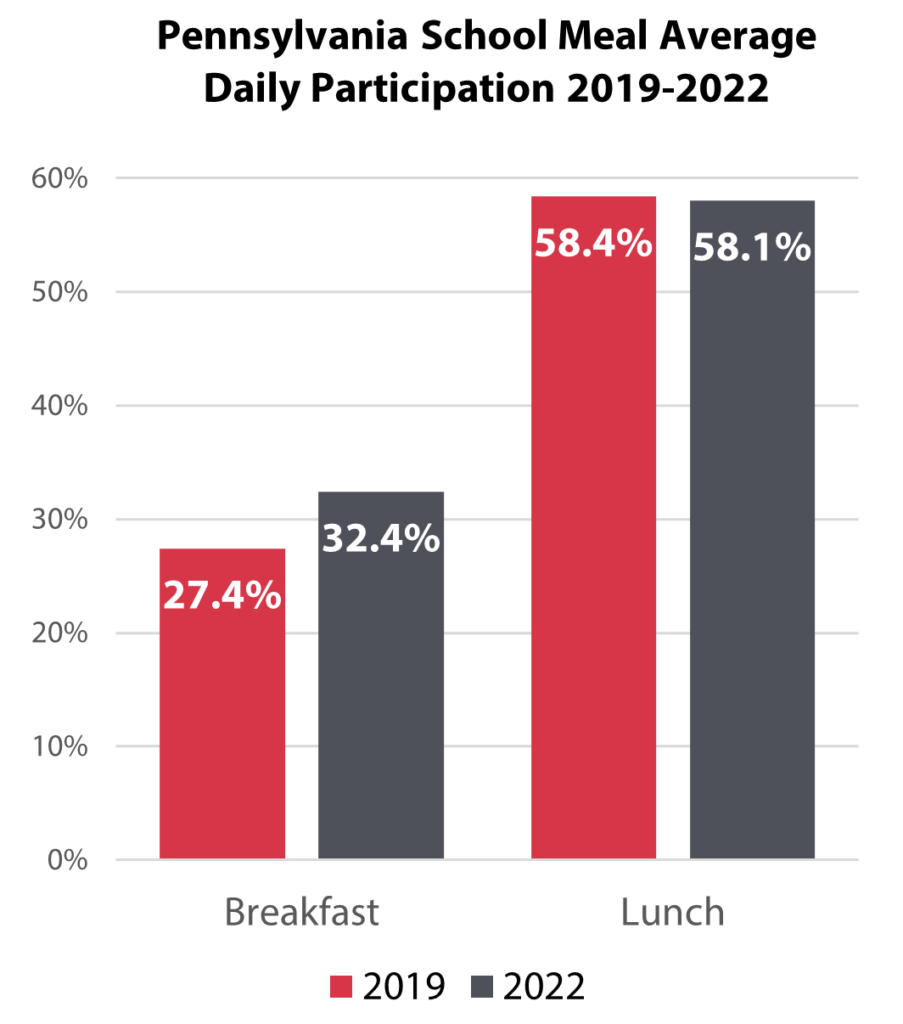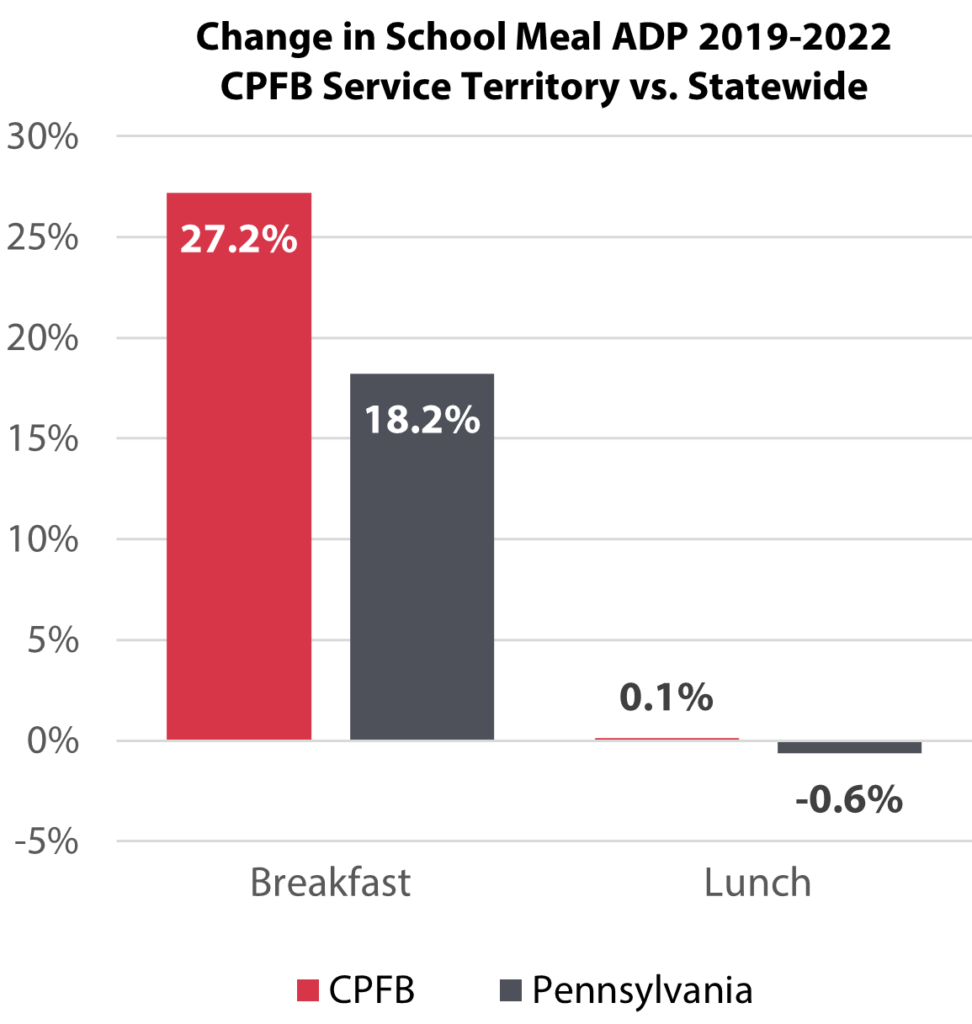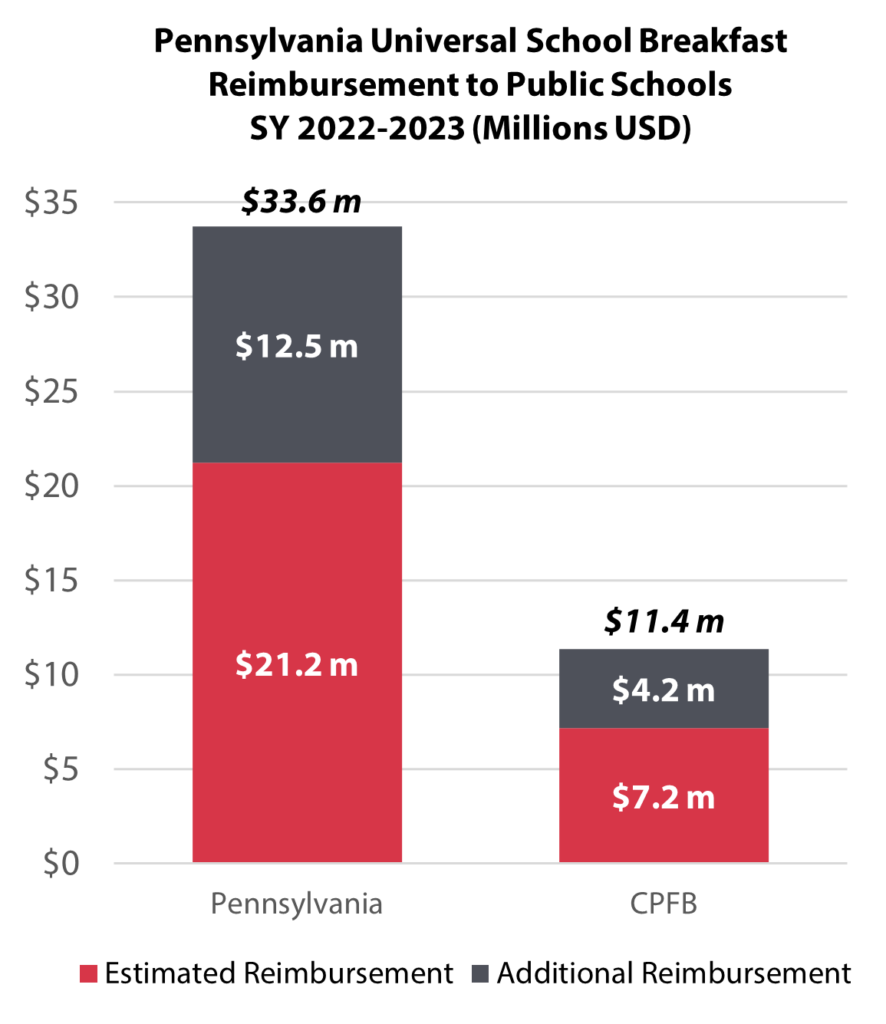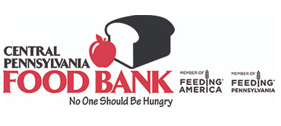The Impact of Universal Eligibility on School Breakfast Participation in Pennsylvania
Pennsylvania’s universal school breakfast initiative is not even one year old yet, but it is already creating positive impacts for kids. Participation in school breakfast jumped nearly 20% as a result of Governor Wolf’s $21 million investment that made school breakfast free for all students, regardless of income and without the need for families to complete income eligibility applications. The universal school breakfast program recently passed in this year’s state budget will likely allow schools to increase participation even further.

Analysis of the change in school breakfast participation in traditional public schools from October 2019, the last year for which the data was unaffected by COVID-19 response, to October 2022 reveals that average daily participation (ADP) in school breakfast has risen about 18% on average across the Commonwealth, jumping from 27.4% to 32.4%.
Meanwhile, average daily lunch participation remained consistent, with a slight drop of less than half a percentage point. The fact that average daily breakfast participation has risen so dramatically while lunch participation remained nearly flat provides compelling evidence for the power of universal eligibility to increase program uptake. This is particularly true because the lack of change in lunch participation is a strong indicator that the main driver of change in breakfast participation is the eligibility expansion rather than other environmental factors that would affect both meal services.
Across the 27 counties CPFB serves, breakfast participation rose even more, at 27.2%, or almost seven percentage points, while lunch grew only 0.1%, less than one-tenth of a percentage point.
Central Pennsylvania’s increased rate of growth in breakfast participation as compared to the rest of the Commonwealth is likely attributable to the fact that many of the largest school districts in the state, such as Philadelphia City Schools and Pittsburgh School District, already participated in the Community Eligibility Provision (CEP) that allowed them to provide breakfast at no charge to all students before the statewide initiative; as a result, these districts already had ADP rates above the statewide average even in 2019.


In addition to the benefits increased access to breakfast brings to school kids, this increase in breakfast participation has also brought more than $12 million more in additional breakfast reimbursement dollars to Pennsylvania public schools than were initially projected using 2019 participation rates. Schools in the Central Pennsylvania Food Bank’s service territory received about a third of that funding, at $4.2 million.
With universal school breakfast having been renewed for another year as part of the recently passed state budget, Pennsylvania’s public schools can do much more to capitalize upon this opportunity. While expanded eligibility alone clearly has made a substantial difference in breakfast participation, school districts could also implement proven strategies to further boost participation, such as breakfast in the classroom in elementary schools or grab-and-go or second change breakfast in secondary schools.
For further reading: In September 2022, CPFB Policy Research noted in an op-ed for One United Lancaster that the policy might be expected to increase participation in school breakfast programs thanks to the lowered barriers to access; however, it will require local action to realize the full benefits of the universal school breakfast program.
Methods:
This analysis was conducted using School Year 2019-2020 and School Year 2022-2023 Child Nutrition Program participation data sourced from the Pennsylvania Department of Education in combination with 2022-2023 financial reimbursement rate formulae from the United States Department of Agriculture.
The specific programs assessed are the School Breakfast Program, including Severe Need Breakfast (referred to together as SBP or school breakfast throughout this analysis), and the National School Lunch Program (NSLP or school lunch).
Average daily participation (ADP) is calculated for both breakfast and lunch by dividing the number of total breakfasts or lunches served in a base month by the number of service days to calculate meals per day, then dividing again by school enrollment to estimate the average percentage of children who participate in each program on any given school day. This method of calculation means that breakfast and lunch participation rates can be directly compared to each other, as opposed to other breakfast participation calculation methods which express breakfast participation in proportion to lunch. October is used as the base month for each school year in accordance with methods used by the Food Research and Action Center (FRAC).
Annualized financial figures have been calculated by annualizing the base month, in accordance with methods used by FRAC. This allows for unduplicated enrollment and eligibility figures to be used, while also providing a reasonable value for a full year’s services. All annualized figures assume about 35 weeks, or eight months, of school meal service.
Finally, although private or parochial schools and public and private residential childcare institutions are eligible to participate in SBP and/or NSLP, they have been excluded from this analysis, as public-school enrollees comprise the overwhelming majority (97.8%) of students attending schools that participate in SBP or NSLP in the CPFB’s service territory, and program operation at private or residential institutions may not be directly comparable to operations in public schools.
